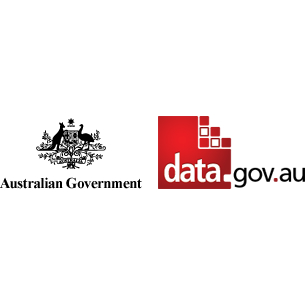Brief description
### OverviewThe aerial waterbird survey (AWS) analysis that underpinned the Basin Plan Evaluation 2020 drew predominately on annual aerial survey data across 38 key wetlands across the Murray-Darling Basin, since 2014. These surveys are run conjunction with the Eastern Australian Waterbird Survey (EAWS) since 1983.
The sourcing of this data was done predominately through a third-party external provider through contract agreements.
Recently, Geoscience Australia has been developing a Wetland Insight Tool (WIT) to allow users to observe the spatiotemporal behaviour of wetlands in Australia. The outcomes generated by this tool provide an insight into wetland habitat.
### Basin Plan Evaluation 2020 products
A range of products have been developed and released as part of the Basin Plan Evaluation 2020.
[Link to content landing zone](https://www.mdba.gov.au/water-management/basin-plan/basin-plan-evaluations/2020-basin-plan-evaluation)
[Link to reports and data page](https://www.mdba.gov.au/publications-and-data/publications/2020-basin-plan-evaluation-reports-and-data)
Full description
Eastern Australian Waterbird Survey (EAWS) - ###Overview\r\nThe Eastern Australia Waterbird Survey, run by the Centre of Ecosystem Science at the University of New South Wales (UNSW Sydney) since 1983, by Richard Kingsford and his team. This survey covers the Eastern part of the Australian continent, flying a plane across transects of this region. The relevant attributions are made below.\r\n\r\nThis survey is a large-scale, long-term survey method to measure the abundance and diversity of waterbirds across this large region, as well as providing information about the health of wetlands and rivers.\r\n\r\nThis information supports the evaluation of the effectiveness of the Basin Plan, under Schedule 7, for waterbird related targets identified.\r\n\r\n\r\n###Attribution\r\n\r\nUNSW website link and UNSW Database linkMurray-Darling Basin Aerial Waterbird Survey - ###Overview\r\nThe aerial waterbird survey (AWS) analysis that underpinned the Basin Plan Evaluation 2020 drew predominately on annual aerial survey data across 38 key wetlands across the Murray-Darling Basin, since 2014.\r\n\r\nThe annual aerial waterbird survey collects data at a national, regional and local level. This information supports monitoring of Ramsar Conventions in Australia, as well as statutory obligations under both the Water Act (2007) and Basin Plan (2012).\r\n\r\nThis program has investigated the effectiveness of waterbirds as a good indicator of basin health as well as improving our understanding of the wetlands under observation.\r\n\r\nThis information supports the evaluation of the effectiveness of the Basin Plan, under Schedule 7, for waterbird related targets identified.\r\n\r\nThe sourcing of this data was done predominately through a third-party external provider through contract agreements. \r\n\r\n###Survey Evolution\r\nIn 2007, the MDBA first funded an external third-party to survey selected wetlands, specifically The Living Murray (TLM) programs wetlands, and formed part of the Eastern Australian Wetland Survey (EAWS).\r\n\r\nIn 2010, these surveys were extended to include Hydrological Indicator Sites (HIS), with the intention to support Basin Plan monitoring and evaluation.\r\n\r\nIn 2013-2014, the program expanded to include 39 significant wetlands, which included all Ramsar Sites within the Murray-Darling Basin, all The Living Murray (TLM) sites, as well as wetlands identified through the Basin-wide Environmental Watering Strategy (BWS).
Coorong and Lower Lakes Waterbird Census - ###Overview\r\n\r\nLong-term monitoring of waterbirds in the Coorong and Lower Lakes in South Australia is undertaken by the University of Adelaide and forms part of the annual waterbird census in the Lower Lakes, Coorong and the Murray Mouth (LLCMM) region. Waterbird monitoring in the Coorong commenced in 2000, and it expanded in 2009 to include the Lower Lakes.\r\n\r\nThe LLCMM region is a Ramsar-listed wetland of international importance for migratory waterbirds. It is also one of the icon sites under The Living Murray program. The condition of the LLCMM region, and waterbird recruitment and populations, have been identified as targets against which to assess progress towards achieving the objectives of the Murray-Darling Basin Plan. The waterbird census data and findings form part of the ecological information used for this assessment.\r\n\r\nThe 2016-17 monitoring program was funded by the Murray-Darling Basin Authority (MDBA). Between 2000 and 2016, the MDBA, South Australia’s Department of Environment, Water and Natural Resources (DEWNR), Nature Foundation South Australia, Earthwatch Australia and the University of Adelaide funded the monitoring program in different years.\r\n\r\nThe MDBA has made the waterbird databases and related resources publicly available on data.gov.au as part of its commitment to the Australian Government policy on public data and information.\r\n\r\nThis information was originally published by the MDBA on data.gov.au, the link to the original data can be found here.
Subjects
User Contributed Tags
Login to tag this record with meaningful keywords to make it easier to discover
Identifiers
- Local : waterbird-data-for-the-basin-plan-evaluation-2020
- URI : data.gov.au/data/dataset/b50e3aed-e8ae-42eb-ae74-588ddcd4a75a



